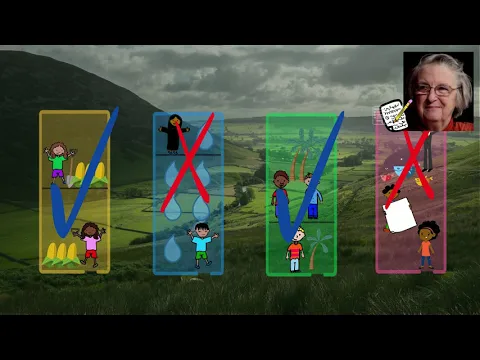A very important figure in debunking the myth of the “tragedy of the commons”, was political scientist and political economist, Elinor Ostrom. She was the first woman to win the Nobel prize in economics. She received this prize for her extensive research on patterns of successful commons governance.

Throughout her career, she documented more than 800 cases from around the world and developed the “8 rules for managing the commons”.
It is these design principles which we now invite you to examine, to further deconstruct this myth. They are illustrated in parallel with the Eight Points of Reference for Commoning (in italic) which were elaborated by the participants of the German Sommerschool on the Commons in 2012, and which reflect on Elinor’s design principles from the perspective of a commoner.
These principles can come in handy for people who are interested in forming a commons, or for people who are already active within a commons to reflect on their ways of working.
1. Commons need to have clearly defined boundaries. It is particularly important that these boundaries define who is entitled to access what. Commons need a specified community of benefit, otherwise a resource risks becoming a free for all.
1. As a commoner I clearly understand for which resources I need to care for and with whom I share this responsibility. Commons resources are those that we create together, that we maintain as gifts of nature or whose use has been guaranteed to everyone.
2. Rules should be adapted to the local context. There is no one-size-fits-all approach to governing a commons. Rules should be proposed and decided on by local people and have a deep rootedness in local ecological needs.
2. We use the common resources that we create, care for and maintain. We use the means (time, space, technology, and the quantity of a resource) that are available in a given context. As a commoner, I am satisfied that there is a fair relationship between my contributions and the benefits I receive.
3. Participatory decision-making is crucial. Rules are more likely to be followed by people if they had a hand in writing them, hence it is important to involve as many people as possible during decision-making processes.
3. We enter into or modify our own rules and commitments, and every commoner can participate in this process. Our commitments serve to create, maintain, and preserve the commons to satisfy our needs.
4. Commons need to be monitored. Once rules have been put into place, communities must come up with ways of checking that people are following them. Accountability here is key.
4. We monitor the respect of these commitments ourselves and sometimes we mandate others whom we trust to help us reach this goal. We continually reassess whether our commitments still serve their purpose.
5. Sanctions should be graduated for those who abuse the commons. Ostrom observed that banning people who broke the rules within a commons usually led to resentment.
In order for a commons to work, she proposed that a community needed to come up with a system of graduated sanctions such as warnings, fines, and informal reputational consequences.
5. We work out appropriate rules for dealing with violations of our commitments. We determine whether and what kinds of sanctions shall be used, depending on the context and severity of a violation.
6. Conflict resolution should be easily accessible. When issues arise within a community, solutions for mediation and conflict resolution should be informal and affordable for everyone.
6. Every commoner can make use of a space and means for conflict resolution. We seek to resolve conflicts among us in an easily accessible and straightforward way.
7. Commons need legal status, hence the right to organize. Local authorities can cause legal barriers for commons which they do not regard as legitimate.
7. We regulate our own affairs, and external authorities respect that.
8. Commons work best if they are embedded within larger networks. Some commons can be managed locally, but others might require wider regional cooperation. For example, an irrigation network might depend on a river which other communities draw on upstream.
8. We realize that every commons is part of a larger whole. Therefore, different institutions working at different scales are needed to coordinate stewardship and to cooperate with each other.
Elinor Ostrom's Design Principles Explained: Bottom-Up Strategies for Environmental Governance.
Elinor Ostrom's Design Principles Explained: Bottom-Up Strategies for Environmental Governance - Vanya Bisht
 Watch on YouTube
Watch on YouTube
Elinor Ostrom's Rules for Radicals: Cooperative Alternatives beyond Markets and States, by Derek Wall.